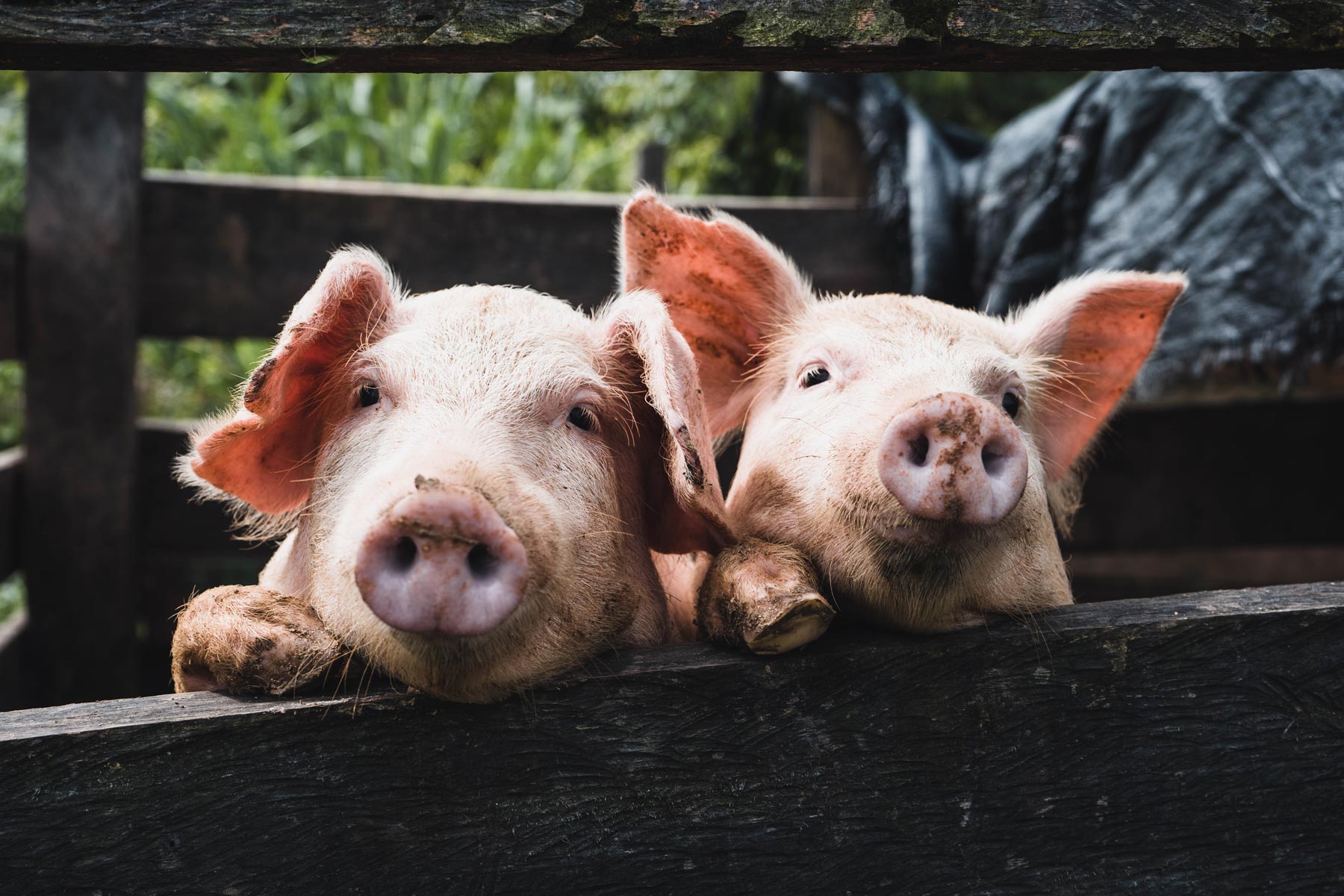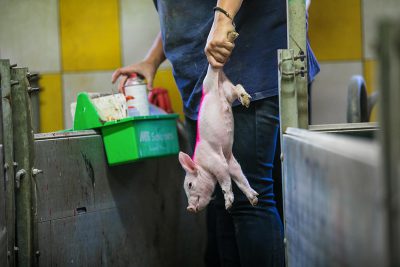It’s likely that most of us have a fond memory of eating a hot dog at a sports game, a carnival, or a fair. We have probably always seen hot dogs as a fun, tasty treat. But what are hot dogs made of and would we feel the same way if we knew all of the ingredients and processes that went into making them? And what would we say if we could still have the same hot dogs, with all of the deliciousness and none of the grossness, by reaching for a vegan hot dog instead of a meat-based one. We think it’s a no-brainer.
What Are Hot Dogs Made Of?
Hot dogs are made of ground up and pureed animal flesh, usually from pigs, cows, or chickens, often all in the same piece of meat. This is somewhat ironic, seeing as we have named it after dogs, an animal most of us would never dream of grinding up and eating. Pigs are equally as intelligent and sentient as our beloved dogs, yet we eat one and treasure the other—we have to ask ourselves why that would be, and if we are okay with this!
What Animal Parts Are in Hot Dogs?
This is where it gets pretty rough. The reason a hot dog doesn’t resemble any part of an animal, is because it is made of all the bits left over, after they have been slaughtered and their more profitable body parts have been removed and sold. According to the Food and Agriculture Organization of the United Nations (FAO):
“The raw meat materials used for precooked-cooked products like hot dogs are muscle trimmings, fatty tissues, head meat, animal feet, animal skin, blood, liver and other slaughter by-products.”

How Are Hot Dogs Made?
The process of making hot dogs is not a pretty one, here’s why.
Trimmings
This is the fancy word the meat industry gives to all the less profitable pieces of animal flesh that are a result of slaughtering and butchering animals. It’s all the bits that people are usually too squeamish to eat, so they are ground up and packaged differently.
Flavorings And Preservatives Are Added
All these “trimmings” are poured into large stainless steel mixers, where all non-animal ingredients are added. The list of ingredients added can be very long but often includes salt, spices, phosphates, flavorings, and other preservatives—all designed to make the product palatable and marketable.
Grinding
This mixture is then poured into industrial blenders, which grind it into a gray, paste-like substance, which is completely unrecognizable as being from any animal.
Pureeing
Water is added and it’s pureed further into a viscous substance. This substance is truly horrifying. Imagine soft serve ice cream, but beige in color and made of raw animal body parts, no thanks.
The Puree Is Injected Into Cellulose Casings
Machinery then pumps this mixture into cellulose casings, which creates the hot dog shape. This process has largely moved on from using the linings of animals’ intestines as casings, but some smaller manufacturers still use lambs’ intestines as a casing. Hundreds of encased hot dogs are then hung, ready to be cooked.
The Hot Dogs Are Cooked in Giant Ovens
Industrial ovens cook and smoke thousands of hot dogs at once, until they are deemed safe to eat (spoiler: processed meat is never ‘safe’ to eat). Because of the different types of animal flesh inside them, they must be cooked properly to avoid causing food poisoning. We think it’s a lot easier to scrap using all those different animal parts altogether and switch to a perfectly safe, plant-based hot dog.
The Casing Is Removed
Machinery then removes the casing, which can be done at a rapid rate. A small slit is made in the hot dog casing before it is blasted with steam, which blows away the casing. On average, industrial machinery can remove the casing from 700 hot dogs per minute!
The Hot Dogs Are Packed And Shipped
They are then washed with a cold, saltwater solution to prepare them for packaging. Each one is meticulously inspected, so that the hot dogs opened on BBQ day in no way resemble the pile of meat scraps they once were.
Finally, they are lined up on plastic sheets, ready to be vacuum-packed, date stamped, and shipped off to the grocery store.
Why You Should Never Eat Hot Dogs?
We want to be clear here, hot dogs as a food aren’t the issue, it’s the animal products within them that cause all the problems. We urge you never to eat MEAT-based hot dogs for two main reasons. One: all processed meats are carcinogenic. They cause cancer, but those made from plants, which are just as delicious, don’t. And two: the industry takes millions of individual sentient beings, denies them everything that would make their life worthwhile, and then takes their lives as well.
There are countless veggie and vegan hot dogs out there that are delicious, healthier than their meat counterparts, and don’t contribute to the suffering of millions of sentient animals every day. So, when summer comes around and we dust off the BBQ, reach for a plant-based hot dog instead of the ones made of ground up animal body parts.

Conclusion
So, it turns out that the process of making hot dogs is pretty gross. If the idea of eating gray puree made up of ground-up animal feet, head meat, and muscle fat makes your stomach turn, it probably should. A hot dog made of tofu, seitan, or other plant proteins contains no animal body parts, is delicious, and good for both the planet and our bodies, so what is there to lose?
Vegan meat alternatives are more delicious and available than ever before, so switching away from meat and going vegan has never been easier.



